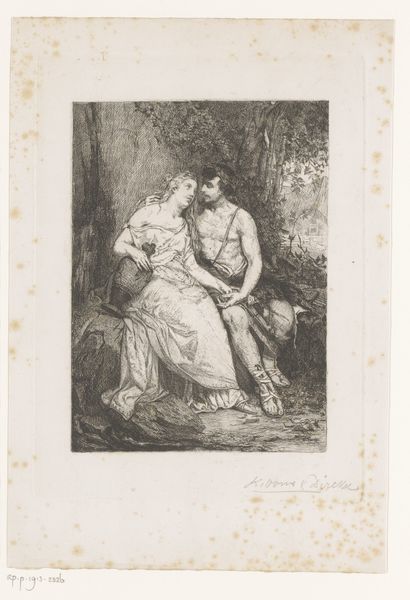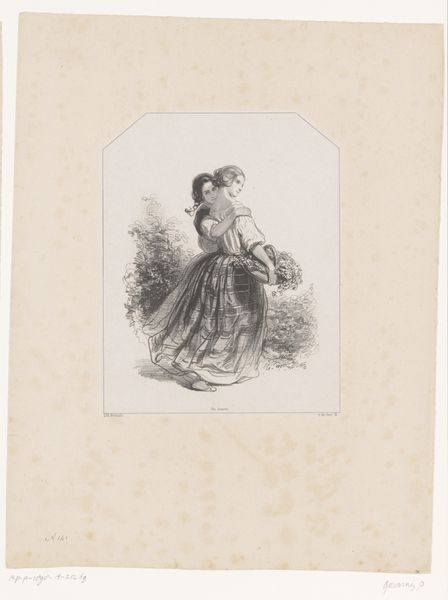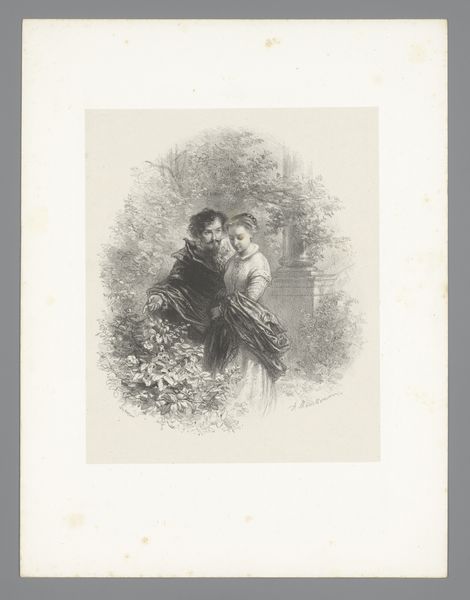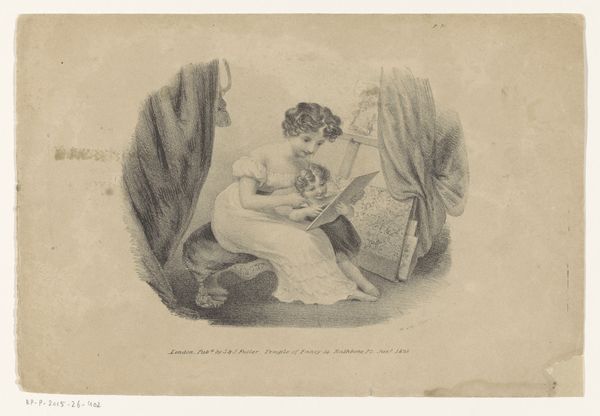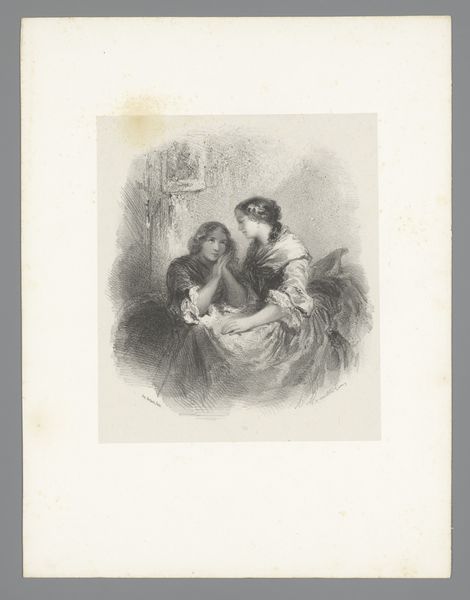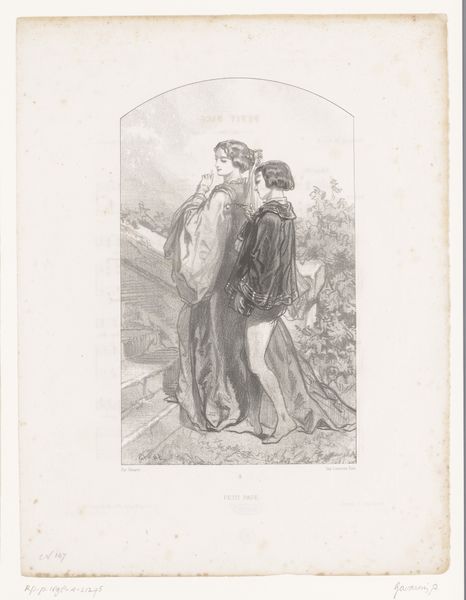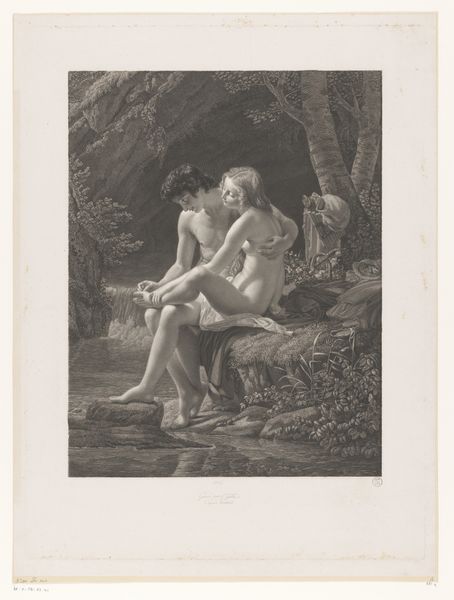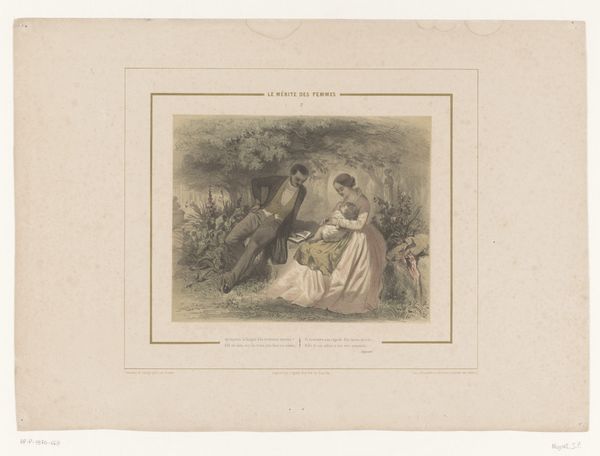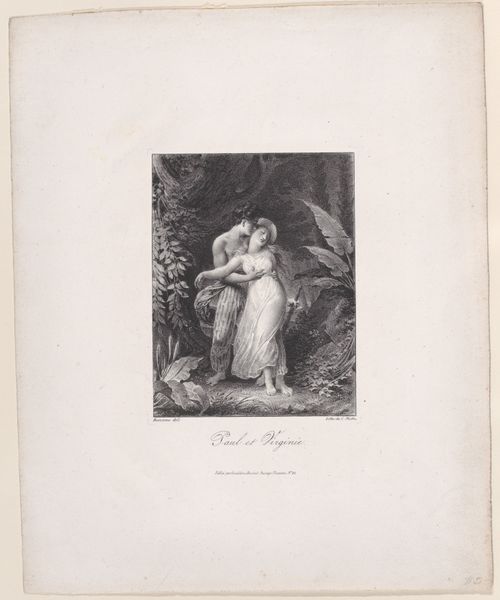
Illustration design for "The Economy of Human Life" 1834
0:00
0:00
drawing, print, pencil
#
portrait
#
drawing
# print
#
figuration
#
romanticism
#
pencil
#
genre-painting
Dimensions: Sheet: 3 5/8 × 3 1/8 in. (9.2 × 7.9 cm)
Copyright: Public Domain
Curator: Looking at this quiet scene, I’m struck by its tenderness, its soft, almost melancholic quality. Editor: Indeed. What we have here is an illustration design for “The Economy of Human Life,” created in 1834 by Frank Howard. The piece resides here at the Metropolitan Museum of Art. It’s a pencil drawing, intended as a print, if I’m not mistaken. Curator: It’s a fascinating example of how artistic skills translated into reproductive mediums for wider consumption, and how notions of romantic intimacy get repackaged. Think of the graphite pencil itself, readily available thanks to developments in material extraction and industrial processing during this period. How many sketches and preliminary studies existed before arriving at this seemingly “finished” version? Editor: Absolutely. We need to situate this within the booming print culture of the 19th century. "The Economy of Human Life," whatever its literary merits, was likely targeted at a burgeoning middle class eager for instruction and moral guidance. Notice how Howard has staged the couple in this arcadian setting. They are posed under a tree, in soft, idyllic lighting. The figures are placed centrally, clearly conveying intimacy and a vision of domestic harmony for public consumption. Curator: Consider also that while appearing accessible due to its small scale and unassuming materials, the work demanded great skill. To render such delicacy and detail with something as commonplace as pencil involved countless hours of training. What about its accessibility, though? Doesn't that also relate to cost, how inexpensive pencil drawings would've been to reproduce compared to something more ornate, and that influences distribution? Editor: A very valid point. The affordability made it a valuable tool to influence widespread cultural ideals around family. The medium facilitates the message itself, allowing the artwork, and its ideals, to proliferate in public imagination. Curator: Right. We must appreciate how seemingly "simple" choices of media become intertwined with grand social narratives. Editor: Precisely. Howard’s illustration then, becomes a product, yes, but also a social document embedded within the material conditions of its creation. It invites us to see beyond a singular aesthetic moment, really broadening our understanding.
Comments
No comments
Be the first to comment and join the conversation on the ultimate creative platform.
